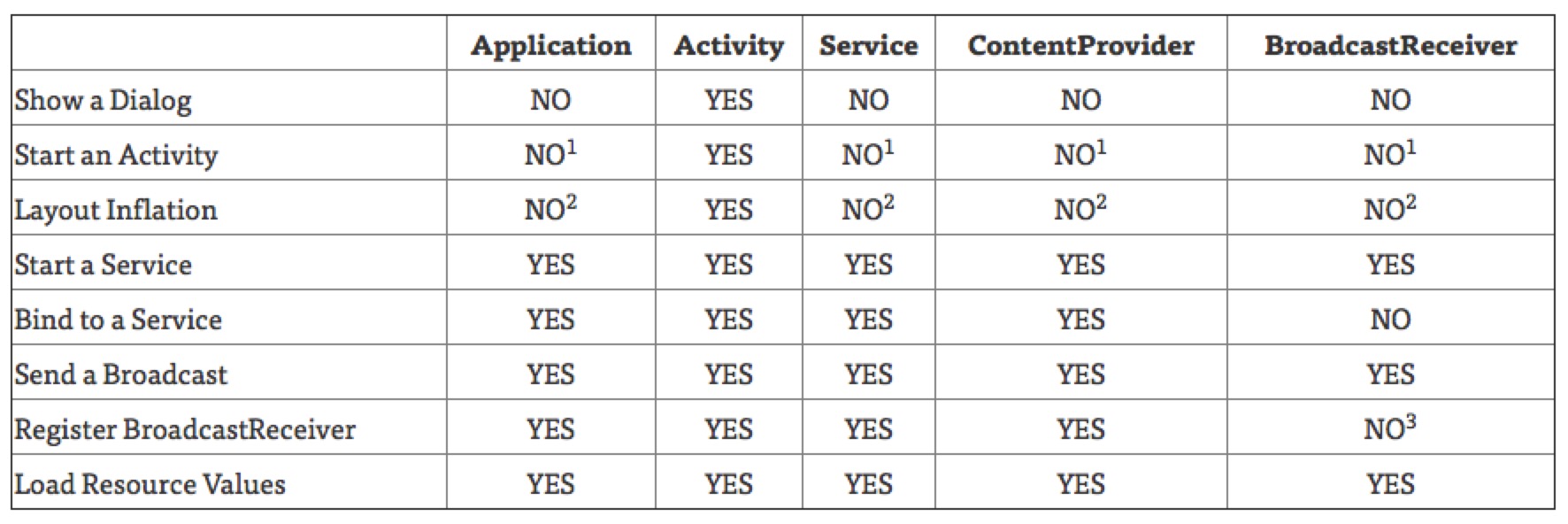Getting Google Advertising Id and Differences of Contexts
2,296 words in 14 minutes
Recently I joined my friends in a side project named Money Maker. The idea of this project is fairly simple: it aims at integrating advertisement platforms together within our app and provide little task for users. User can finish these tasks and get credits, and exchange the credits with cash or gift cards. We are a team of 5: 1 iOS app dev, 1 Android app dev, 1 front-end dev, 1 backend dev, and 1 support guy and we are now supporting 126,822(98560 + 28262) users in total. The problem I’m going to talk about today happened during the dev process.

Background
I’m updating Android client to new version right now. In this version, we designed a new scheme to prevent fraudulent traffic. Basically, we try to bind user’s phone number to their account and get the google advertising identifier(GAID) of the device. It should be a simple problem. But getting GAID is a real painful thing.
Original Solution
According to the documentation on Android developer’s site[1], to get GAID with code on device, we need to set up Google Play Services SDK first[2]. Just open the SDK manager and download the latest version of it. Then we add it as a library project and modify your app’s manifest file. Add the following tag as a child of the
One more thing needed is preventing ProGuard from stripping away required classes. Add the following lines in the proguard-project.txt:
|
|
OK, now we should be able to use Google Play Services SDK in our app. To make sure it is the latest version, call GooglePlayServicesUtil.isGooglePlayServicesAvailable(Context context) and check if the result code is 0, which means SUCCESS.
Now with the SDK set up, we can make use of the code provided by Google. An Example implementation is as below:
One extremely important thing here is DO NOT call getIdThread() from main UI thread. getAdvertisingIdInfo(Context context) is a blocking call. If called on the main thread, the method throws IllegalStateException.
Problem
After I implemented the code with according to things above, I still couldn’t get the GAID on my phone. Below is the error log and code.

|
|
It kept throwing IOException and Connection failure. I searched on google for possible solutions, but no matter I put it in an AsyncTask’s doInBackground() method[3] or a thread’s runnable, it just didn’t work.
Solution
I already called it with worker thread, so that should not be the cause. When I was about to give up and try to implement my own class according to the solution on StackOverFlow[4], it suddenly came to me that what if I change the context of current Activity to Application context? Although I didn’t know the exact difference between them, I remembered that using getApplicationContext() crashes both ProgressDialog and Toast, which lead me to this feeling that it might be the problem.
And it really worked. Then I tried on different devices and different places to put the thread call(onCreate(), onResume(), onClick()), it all worked.
Differences of Activity Context and Application Context
I gave my answer on StackOverFlow[5] and decided to figure out the exact differences between these contexts.
Actually both Activity context and Application context are instances of Context class, but Application context is tied to the lifecycle of the process, while Activity context is to the lifecycle of related Activity. Thus they have access to different information about the application environment.[6]
In the documentation[7] of method getApplicationContext(), it mentions an example of how it interacts with registerReceiver(BroadcastReceiver, IntentFilter). If used from an Activity context, the receiver is being registered within that Activity. When the Activity is destroyed, the receiver no longer works. If used from an Application context, the receiver will never be unregistered.
You only use getApplicationContext() when you know you need a Context for something that may live longer than any other likely Context you have at your disposal. Scenarios include[8]:
- Use getApplicationContext() if you need something tied to a Context that itself will have global scope. I use getApplicationContext(), for example, in WakefulIntentService, for the static WakeLock to be used for the service. Since that WakeLock is static, and I need a Context to get at PowerManager to create it, it is safest to use getApplicationContext().
- Use getApplicationContext() when you bind to a Service from an Activity, if you wish to pass the ServiceConnection (i.e., the handle to the binding) between Activity instances via onRetainNonConfigurationInstance(). Android internally tracks bindings via these ServiceConnections and holds references to the Contexts that create the bindings. If you bind from the Activity, then the new Activity instance will have a reference to the ServiceConnection which has an implicit reference to the old Activity, and the old Activity cannot be garbage collected.
Conclusions
How to get GAID
- Download latest Google Play Services SDK.
- Import the code and add it as a library project.
- Modify AndroidManifest.xml.
- Add rules in proguard-project.txt.
- Call
AdvertisingIdClient.getAdvertisingIdInfo(getApplicationContext()).getId()in a worker thread to get the id in String.
Differences
- They are tied to different lifecyle.
- They have access to different information.
Extension Reading
Except for Application and Activity contexts, there are other contexts in Android, namely Service context, ContentProvider context, and BroadcastReceiver context. Below is a clear table on context capabilities from a nice post by Dave Smith[9]:

References
- Android Developers Official Site, Advertising ID
- Android Developers Official Site, Setting Up Google Play Services
- AdMax Tech Blog, 【Android】AdvertisingIDの取得方法
- StackOverFlow, Using the new Android Advertiser id inside an SDK
- StackOverFlow, My Answer On Ad SDKs can’t seem to get the Advertising info from the device
- StackOverFlow, Difference between Activity Context and Application Context
- Android Developers Official Site, Documentation on getApplicationContext Method
- StackOverFlow, When to call activity context OR application context?
- Dave Smith, Context, What Context?

